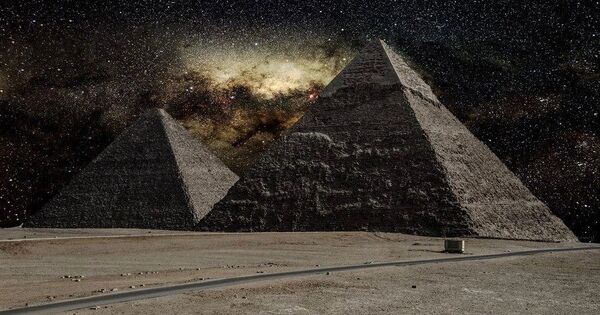Astrophysicists shed light on the connection between the Milky Way and the Egyptian sky deity Nut. The research uses ancient Egyptian writings and simulations to demonstrate that the Milky Way may have cast a spotlight on Nut’s role as the sky. It suggests that in the winter, the Milky Way accentuated Nut’s outstretched arms, and in the summer, it traced her backbone across the sky.
The ancient Egyptians were recognized for their religious beliefs and astronomical understanding of the Sun, Moon, and planets, but it has long been unknown what role the Milky Way played in Egyptian religion and culture.
A new study by a University of Portsmouth astronomer sheds insight on the connection between the Milky Way and the Egyptian sky goddess Nut. Nut is the sky goddess, frequently represented as a star-studded woman stretched over her brother, Geb, the soil god. She prevents the earth from being swamped by the void’s invading waters and plays an important role in the solar cycle, eating the Sun as it sets at dark and giving birth to it again as it rises at dawn.
My research demonstrates that Nut’s role in the journey of the departed to the afterlife, as well as her relationship to the annual bird migration, are comparable with how other cultures perceive the Milky Way. Examples include the Spirits’ Road in North and Central America and the Birds’ Path in Finland and the Baltics.
Dr. Graur
The paper draws on ancient Egyptian texts and simulations to argue that the Milky Way might have shone a spotlight, as it were, on Nut’s role as the sky. It proposes that in winter, the Milky Way highlighted Nut’s outstretched arms, while in summer, it traced her backbone across the heavens.
Associate Professor in Astrophysics, Dr Or Graur, said: “I chanced upon the sky-goddess Nut when I was writing a book on galaxies and looking into the mythology of the Milky Way. I took my daughters to a museum and they were enchanted by this image of an arched woman and kept asking to hear stories about her.
“This sparked my interest and I decided to combine both astronomy and Egyptology to do a double analysis — astronomical and cross-cultural — of the sky-goddess Nut, and whether she really could be linked to the Milky Way.”

Dr Graur consulted a wealth of ancient texts, including the Pyramid Texts, Coffin Texts, and Book of Nut, and compared them to sophisticated reconstructions of the Egyptian night sky.
He discovered overwhelming evidence that the Milky Way accentuated Nut’s heavenly nature. Furthermore, Dr Graur linked Egyptian beliefs to those of other cultures, demonstrating commonalities in how various people perceive the Milky Way.
He stated, “My research also demonstrates that Nut’s role in the journey of the departed to the afterlife, as well as her relationship to the annual bird migration, are comparable with how other cultures perceive the Milky Way. Examples include the Spirits’ Road in North and Central America and the Birds’ Path in Finland and the Baltics. My research demonstrates how merging disciplines can provide new insights into old ideas, and it emphasizes how astronomy unites humans across cultures, territory, and time. This work is an intriguing first step toward a broader attempt to document and explore the Milky Way’s eclectic mythology.
















